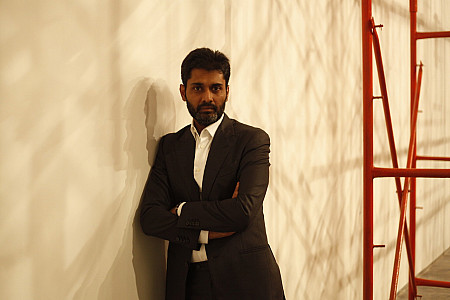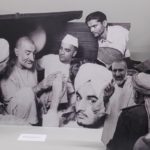Is it a film? Is it theatre? It’s CinePlay!
Catering to cinephiles and theatre enthusiasts alike is CinePlay, a festival that attempts a marriage between the two. An initiative by actor Nandita Das and her entrepreneur husband, Subodh Maskara, it aims to support the art of theatre by enabling a wider reach. On its schedule are screenings of Lilette Dubey’s Dance Like a Man, Vickram Kapadia’s Bombay Talkies, Between the Lines by the creative founders, and many more. What they do is take an acclaimed theatre production and film it over a couple of days with the nature of acting, lighting and sets suitable for viewing on screen. But then, where’s the magic of theatre, is the question that is likely to occur to the purists. We get festival director, Subodh Maskara, to respond and tell us about CinePlay, the challenges of mixing mediums and the response they have received. Excerpts from the interview below:
On the inception of CinePlay
“I did a theatre production with Nandita (Das) called Between the Lines, in 2012. Originally, the idea was to do maybe 10 shows and then close the production. We got so many invitations from all over the world, which we had to turn them down for logistic issues or mismatched budgets. Other theatre producers faced the same problem: being geographically locked into the city that they started in.
There is great content, story and entertainment in theatre. Why not capture it in an interesting way and make sure that people could watch it without these constraints? There is some history of people recording live theatre. We try to do it here and it does not work very well because the grammar of theatre and the grammar of cinema is completely different. So that’s when I thought about merging the two.
You know it’s theatre because the way the script and the story is told is very theatrical, very dramatic. We add cinema to it and create a hybrid. And then Nandita said, ‘Why don’t you call it CinePlay?’ And I thought that was a great way of coining the word because it really communicates what I want to say. That was how CinePlay was born.”
On the challenges of adapting theatre for screen
“The first thing we did was to experiment with our own production. Surprisingly, when we did Between the Lines and showed it to our friends from theatre and cinema and a general audience, they loved the experience. People said it was a very different experience; not comparable to live theatre, but they caught things they had missed in the live production. It’s like cricket. When you watch it on television or when you watch it in a stadium, it’s actually the same match but gives you two completely different experiences. I think CinePlay does that to theatre. We’re not recreating it but we are trying to complement theatre by giving you a richer experience of that.”
On the technicalities of it all
“The plays are shot specifically for CinePay in a studio. We shoot it like cinema, where it’s shot over several days. We take many takes, different angles, we light it for camera and the acting is for camera. We add a lot of cinema techniques to this whole concept, to give you a completely different experience. Recording a play would not work. It’s a very incomplete experience. There are some performances that lend themselves to recording and an opera or ballet may, because it’s got a lot of music. Therefore, we have done this only for theatrical productions, which have a story, dialogue, characters or movement which can be shot specifically. When theatre is produced, the lighting and acting is for a live audience. I’m shouting because there are a thousand people in the audience. If I were to shout into the camera, people would think I’m crazy!”
On the play selections
“Two things. One is of course, the narrative lends itself to converting it to a CinePlay. It’s got a story, some drama, elements that will make it engaging for a viewer on screen. Some of the plays are very iconic like Dance Like a Man and Aadhe Adhure. We are shooting six plays of Vijay Tendulkar who is probably one of the greatest playwrights in India from the 70s. Now, we’re starting with English and Hindi theatre, but we’ll go to regional theatre like Marathi, Gujarati and Punjabi, because by subtitling it, we can break the language barrier. Today people in France are watching our play because we’ve got it subtitled in French!”
On the response from the theatre directors and productions
“It’s 50-50. 50% love it and they support it. 50% feel that we are destroying theatre. This is not theatre, and I like the fact that they feel that way. The only example I can give is of Sunil Gavaskar. When they announced something like T-20 cricket, Gavaskar was on NDTV news and was completely going ballistic about how the Cricket Board was destroying cricket because this was just not cricket; and today he does commentary for the IPL and was even Chairman of the BCCI for a brief period. I think digital is a reality and I feel CinePlay is a friend of theatre so theatre practitioners should not be worried. We want to support them and enhance their revenues, their visibility and their fan following.”
And the audience reactions.
“The audience absolutely loves it, and that is what keeps us going. The reactions range from saying ‘it’s a revolution’, to ‘the best thing they have seen’, to ‘the greatest time that they had’. They are my adrenalin and I get a boost every time I go to a show and I see them react. It’s truly amazing and I’m overwhelmed. I really never thought it would become so endearing to the audience.”
On every weekend at Matterden CFC, Mumbai, until March 22, 2015
Related posts from Verve:
Verve Trending
Sorry. No data so far.
us on Facebook to stay updated with the latest trends






